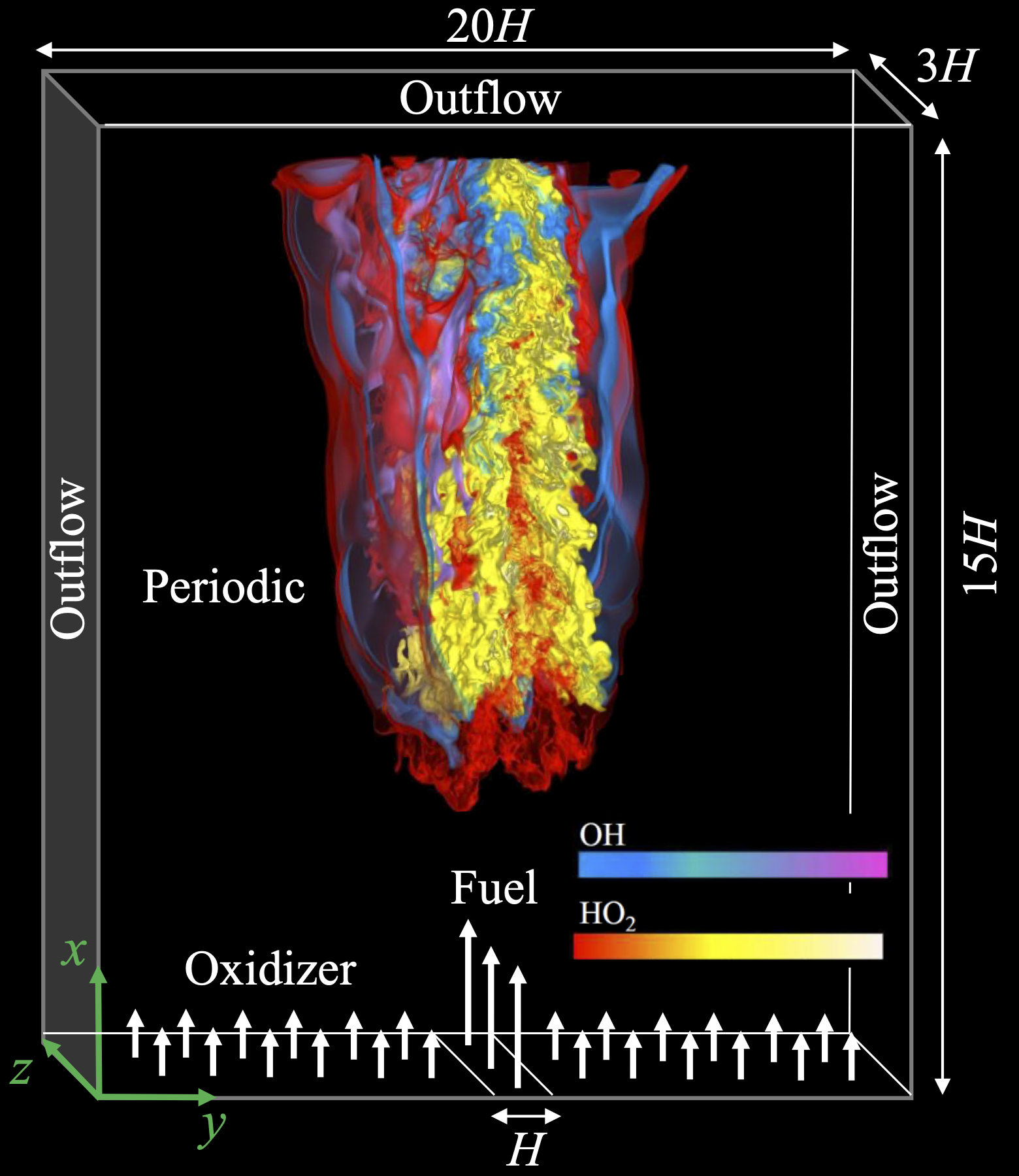Slot Burner
Slot Burner Diluted Partially-Premixed H2-air Lifted Flame DNS

Description
This DNS configuration involves a turbulent lifted hydrogen jet flame in heated co-flow air. A diluted fuel mixture (65% H2 and 35% N2 by volume) is issued from the central slot at an inlet temperature of 400 K. This central jet is surrounded on either side by co-flowing heated air streams with an inlet temperature of 850 K, at atmospheric pressure. The jet width at the inlet is 2 mm. The jet Reynolds number is 8000. Velocity fluctuations, u′, which is 10% of Ujet, is obtained by generating an auxiliary homogeneous isotropic turbulence field. These fluctuations are then fed from the inlet using Taylor’s hypothesis. This 2000 × 1600 × 400 computational domain is 15H × 20H × 3H in the streamwise x-, transverse y-, and spanwise z- directions, respectively, resulting in a total of 1.28 billion cells. A uniform grid size of 15 μm is placed in the x- and z-directions, while the y-directional grid is algebraically stretched outside the flame and shear zones. Improved non-reflecting boundary conditions are adopted in the x- and y-directions, while periodic boundary conditions are applied in the z-direction. The data is collected after four jet flow-through times after the flame becomes statistically stationary.
The Sandia DNS code, S3D, is employed for solving the compressible Navier–Stokes, species conservation, and total energy equations. Spatial derivatives are approximated with an eighth-order central difference scheme, and a tenth-order filter is used to remove any spurious high-frequency fluctuations in the solution. For time integration, a fourth-order explicit Runge-Kutta method is used. The employed detailed hydrogen-air chemical mechanism composed of 9 species and 21 elementary reaction steps was developed by Li et al.
Quick Info
- Kaggle Link
- Contributors: Ki Sung Jung, Jacqueline H. Chen
- Nx = 2000, Ny = 1600, Nz = 400, Nɸ = 6 + 9
- Size = 93 GB
- DOI
- .bib
- info.json